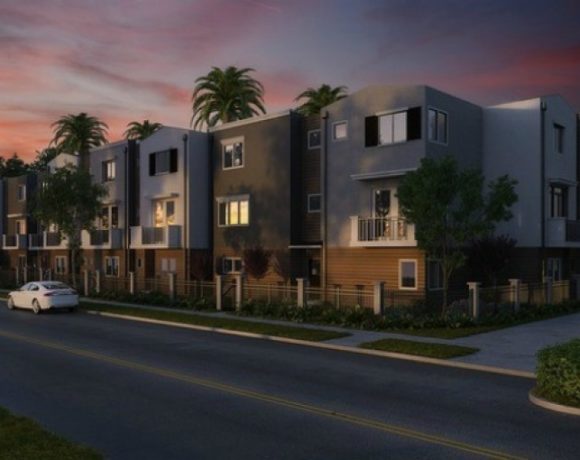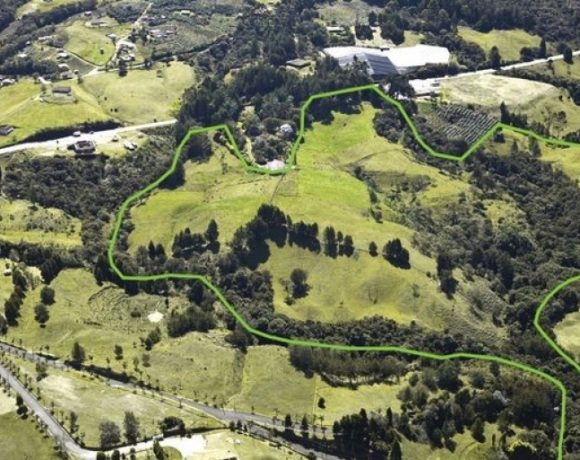Safest Real-Estate Investments in Metro Medellin: Part One

Foreigners exploring metro Medellin to buy a residence, a commercial property or a rental will find that the safest, lowest-risk approach is to acquire an existing apartment, an existing house, an existing building or a well-defined lot inside a fully permitted “parcelacion.”
Another option is to invest in new-build projects that are fully permitted, adequately financed, overseen by responsible fiduciaries, managed by top-flight companies and built by solid, highly experienced construction companies and developers.
Full disclosure: New-build projects (in Spanish known as “sobre planos”) can carry risks that are much greater than buying an existing house, apartment or a legal “parcelacion” lot.
What you don’t know about a new-build project definitely can hurt you, as my wife and I learned the hard way by investing in a commercial development run by a fly-by-night builder that disappeared with the investors’ funds – right under the noses of a well-known fiduciary that nevertheless reneged on its financial oversight duties, either by omission or commission.
This fiasco – unfortunately not unique in Colombia — triggered a class-action lawsuit by a group of investors that’s still pending seven-years-on, thanks to the glacier-like-movement of Colombia’s overwhelmed judicial system.
In contrast, buying an existing building or a well-defined, legalized “parcelacion” lot would be much easier and safer for almost any foreigner — rather than trying to start from scratch with some random, empty lot that (for example) could demand new, legal clarifications on its actual, true dimensions and limits.
You’d be very sorry to have paid a hefty price for a supposedly “large” lot — and then discover afterwards upon registration of your purchase that the local notary, the municipal authority and the Antioquia “catastro” (land registry) lack proper documentation of the true limits (and actual taxable valuation) for your lot. They might just tell you that you’re now the proud owner of thin air.
Reason: In decades past, many or even most lots and “fincas” in Antioquia (and Colombia) carried informal lot-dimension descriptions, with now-disappeared trees, stream-beds, fence-posts, cow paths and other markers used for definitions — rather than today’s super-precise satellite, laser and aerial-photographic measurement techniques.
Other unpleasant surprises can await the unwary investor in a random lot: variable, minimum-size lot requirements for any new building; complex engineering challenges; water-and-sewage layout and permit challenges; power and telecom access issues; property-tax issues; finding qualified engineering and construction contractors; and potential legal snafus.
So explained experts on this subject in interviews with Medellin Herald.
As “Latin Dreams” real estate agency managing director Miguel Homsey explained to Medellin Herald in an October 16 interview at his real-estate office in El Retiro (in the relatively upscale “oriente” region east of Medellin), foreigners coming to metro Medellin for real estate vary in their goals and interests.
But all of them want to minimize real-estate headaches — and want to maximize their return-on-investment, whether that be purely monetary or mainly for improving quality-of-life.
Which is why Homsey – Colombian-born but USA-raised – recommends that foreigners looking for homes in metro Medellin would find it easier to focus upon established, well-defined properties, such as existing apartments, homes, buildings and lots inside “parcelaciones.”
The Latin Dreams agency started-out in the seaside-beach-oriented Santa Marta market six years ago, and still handles sales there via monthly visits and “virtual” advertising. But the company moved its physical offices to El Retiro three-and-a-half years ago, where LatinDreams now does the bulk of its business, Homsey said.
New York-raised Homsey was a financial analyst and corporate marketing exec for American Express (22 years), and also worked in real estate part-time at an independent agency in Brooklyn (20 years). But like so many other expats here, Homsey fell in love with a Colombian, married and eventually moved to metro Medellin.
Today, roughly 95% of the customers of Latin Dreams today are Colombians, with the other 5% being North Americans, he said.
But the goal is to expand marketing and sales to foreigners – potentially via the formation of a new company division, which would leave the mainly local, Colombian-client business to another division, he said.
Among foreigner clients of Latin Dreams today are commercial real-estate investors; retirees that are finding Colombia a better option than Panama or Costa Rica; executives of multinationals that are expanding in Colombia; investors in rentals; second-home buyers that enjoy metro Medellin’s good weather and good medical care — and appreciate the relative ease of flying back-and-forth to North America from Medellin’s international airport (Rionegro), he said.
However, foreign-investor interest in real-estate in metro Medellin likely would get a big boost once local real-estate agencies and real-estate evaluators meet future, tougher licensing and standards requirements — similar to what’s required in the USA, Homsey said.
Recent laws have toughened standards, with the result that “formalization” programs for agents and evaluators are now being aggressively promoted by the local real-estate trade group, La Lonja de Propiedad Raiz para Medellin y Antioquia.
Meanwhile, another recent regulation – “Decreto 2590” – is cracking-down on short-term (less than 30-days) rentals in apartment buildings, Homsey added.
Other factors that could improve foreign-investor interest in the metro Medellin real-estate market would be an expansion of well-qualified professional property managers (for those overseeing rental properties), as well as certification and “Better Business Bureau-like” oversight of trades (plumbers, electricians, masons, roofers, carpenters). Emergence of business-referral networks such as the BNI organizations that have become popular in the USA also would help, he added.
Next: Part Two: Parcelacion Case Study
















